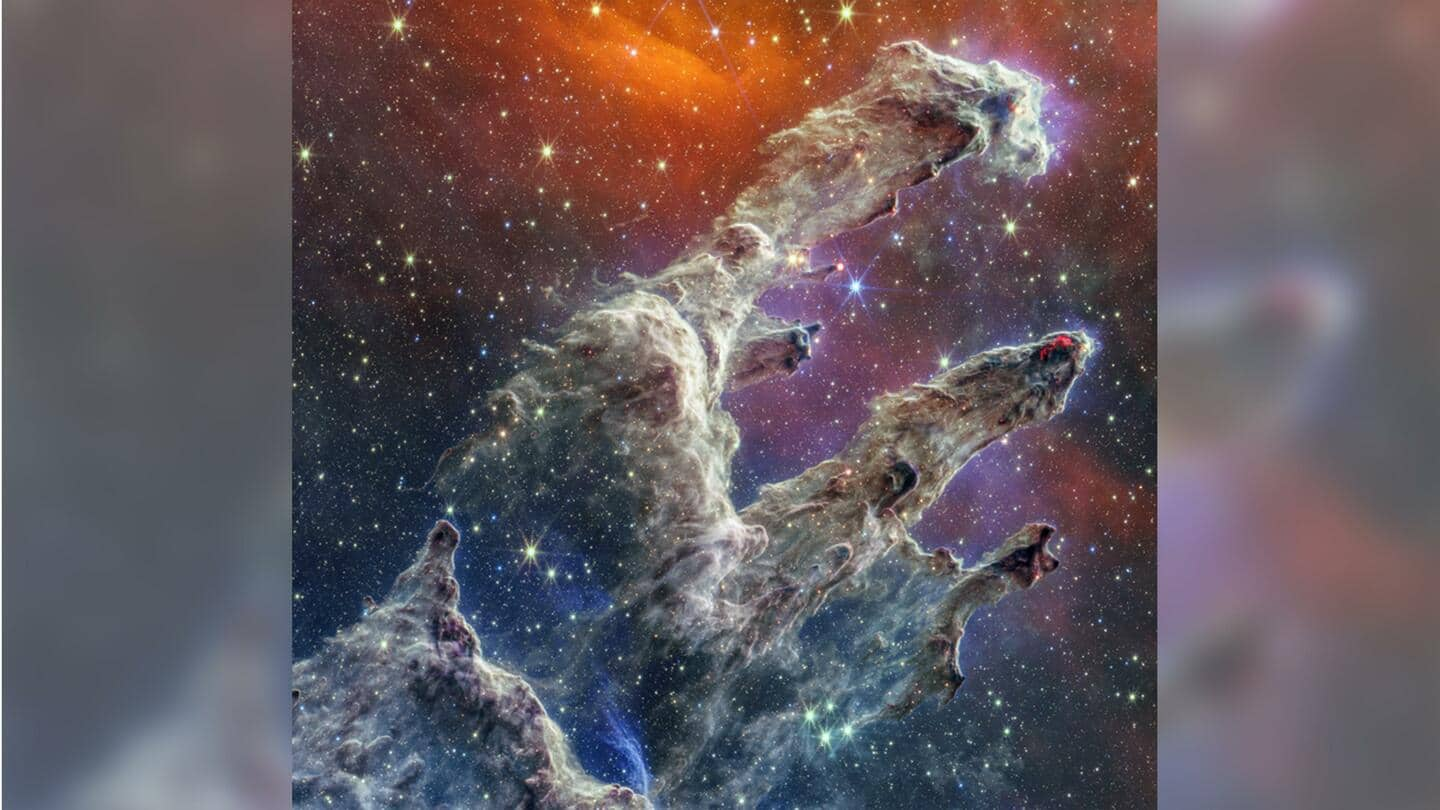
James Webb's image reveals never-seen-before details of Pillars of Creation
What's the story
A new image, courtesy of NASA's James Webb Space Telescope (JWST), has revealed unprecedented details of the Pillars of Creation. By combining data from Webb's Near-Infrared Camera (NIRCam) and Mid-Infrared Instrument (MIRI), this new composite image has been created. Stars are the main highlight of this image. In fact, newly forming stars have also been uncovered in this image.
Context
Why does this story matter?
The Pillars of Creation was first captured by NASA's Hubble Space Telescope in 1995 and later in 2014. It is a star-forming region, wrapped by dust and gas. It is located in Eagle Nebula, which lies 6,500 light-years from Earth in the constellation Serpens. The newest Webb image blends information from two different wavelengths, thereby revealing details that have never been seen before.
Details
Dust is one of the major 'ingredients' of star formation
As seen in the image, the spire-like pillars appear to be filled with dust, which is one of the major components of star formation. "When knots of gas and dust with sufficient mass form in the pillars, they begin to collapse under their own gravitational attraction, slowly heat up, and eventually form new stars," as per NASA.
Image
Details have been captured in the near-infrared and mid-infrared light
Thousands of new stars have been spotted in the near-infrared light, seen as the 'bright orange spheres' near the pillars. The orangish V-shaped dust cloud seen at the top of the image has been captured in mid-infrared light. However, the dust and gas between the stars, and the dust from our Milky Way galaxy obscures our view of the distant universe.
Details
New stars can continue to form for millions of years
The red outliers at the top of the second pillar indicate that new stars are being formed. These stars are estimated to be a few hundred thousand years old and will continue to take shape for millions of years. During the phase of formation, stars send out periodic ejections. These expulsions interact with the gaseous dust-filled pillars, thus forming a 'lava-like' region.